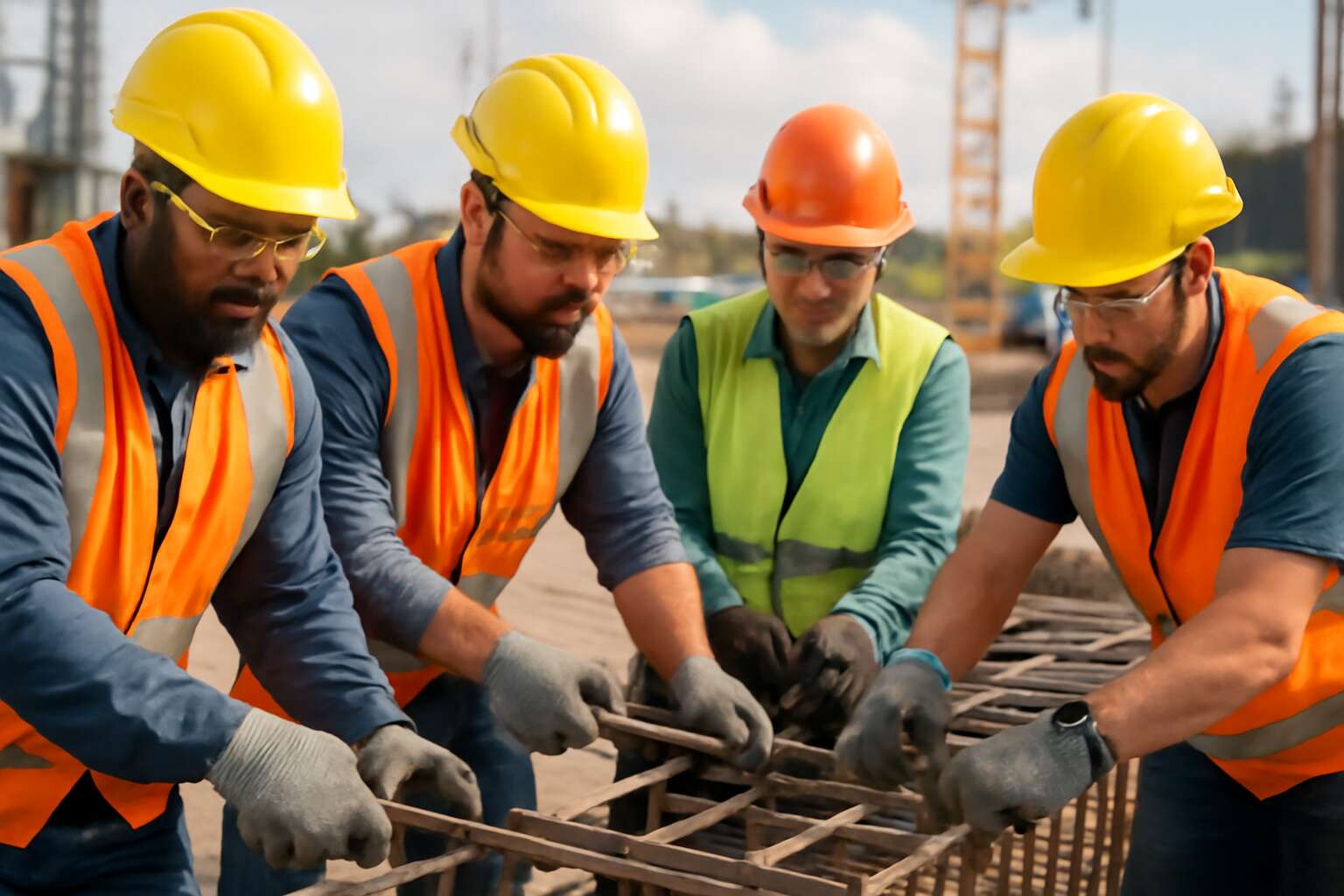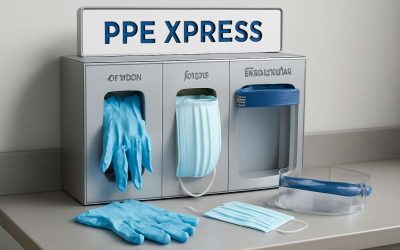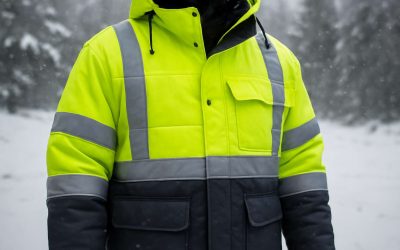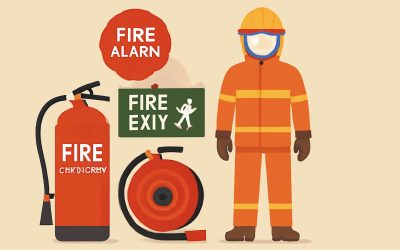Essential Types of Construction Safety Equipment
Personal Protective Equipment (PPE)
In the bustling world of construction, the importance of personal protective equipment (PPE) cannot be overstated—yet surprisingly, nearly 30% of workplace injuries in South Africa occur due to inadequate safety gear. It’s a stark reminder that safety equipment for construction isn’t just a legal checkbox but a vital shield against unforeseen mishaps. When properly donned, PPE transforms from mere fabric and plastic into an armor of assurance, empowering workers to focus on their craft rather than their fears.
Among the essential types of construction safety equipment are helmets that protect against falling objects, high-visibility vests that ensure workers are seen amidst the chaos, and sturdy gloves designed to prevent cuts and abrasions. For those working at heights, harnesses and lanyards are indispensable, securing safety in moments of peril. The thoughtful selection of safety equipment for construction not only safeguards lives but also fosters a culture of vigilance and professionalism on-site.
- Protective footwear with steel toes for robust defense against heavy debris
- Respiratory masks to combat dust and airborne particles
- Ear protection to shield against deafening machinery noise
Fall Protection Systems
Falls remain one of the most perilous hazards on any construction site, claiming lives and causing injuries that could have been prevented with the right safety equipment for construction. Fall protection systems are more than just a legal requirement—they are a lifeline for workers navigating elevated surfaces. These systems are carefully designed to arrest falls immediately and minimize injury, providing peace of mind amid the chaos of a busy site.
Secure anchorage points, combined with safety harnesses and lanyards, create a robust safety net that keeps workers safe at heights. When properly installed, these systems allow workers to focus on their tasks, confident that their safety is safeguarded. The thoughtful integration of fall protection equipment not only saves lives but also bolsters a safety-first culture that resonates through every corner of the construction industry.
Respiratory Protection
In the shadowed corridors of construction sites, unseen enemies lurk—volatile particles, toxic fumes, and airborne contaminants that threaten every breath. Respiratory protection emerges as an unsung hero in the realm of safety equipment for construction, guarding the very essence of life amidst chaos. With the right mask or respirator, workers can confront the murky depths of dust clouds and chemical vapors with a semblance of hope, a fragile barrier between health and peril.
Among the essential types of construction safety equipment, respiratory gear is crafted to filter out the sinister elements that linger unseen. From simple dust masks to sophisticated powered air-purifying respirators (PAPRs), each piece offers a shield against the invisible threats that haunt the air. In environments where hazardous substances are present, the choice of respiratory protection becomes a matter of life and death.
- Disposable masks—lightweight, ideal for light dust and particulate matter.
- Half-face respirators—provide a tighter seal for more hazardous environments.
- Full-face respirators—offer comprehensive protection, shielding eyes and face from dangerous vapors.
In the dark, relentless pursuit of safety, respiratory protection for construction stands as an unwavering sentinel—an essential component in the labyrinth of safety equipment for construction that keeps workers breathing easier and safer amid the shadows of danger.
Site Safety Devices
In the intricate dance of construction, where steel meets sky and dreams take shape amidst chaos, site safety devices serve as the silent guardians of every worker’s well-being. Beyond the usual PPE and fall arrest systems, specialized safety equipment for construction ensures that hazards are met with unwavering resilience. These devices—designed with precision and care—fortify the very fabric of safety on every site.
From the sturdy scaffolding that transforms vertical chaos into manageable platforms to the resilient barriers that delineate safe zones, each piece of safety equipment for construction plays a vital role.
- Warning signs and visual alerts—communicate danger in a language everyone understands.
- Safety netting—catches more than just falling debris, it catches hope and safety itself.
These seemingly simple tools weave a web of protection, turning peril into precaution.
Embracing the right site safety devices transforms a construction zone from a perilous arena into a sanctuary of progress. Every bolt, every barrier, and every sign contributes to a symphony of safety that keeps workers breathing easy, even in the shadows of towering structures. In this realm, safety equipment for construction isn’t just a necessity; it’s the heartbeat of every successful project.
Key Features to Consider When Choosing Construction Safety Equipment
Material Durability and Comfort – Importance of high-quality, comfortable materials for prolonged use
In the shadowed corridors of construction sites, where danger lurks like specters waiting to pounce, the choice of safety equipment for construction becomes a matter of life and death. The materials that forge these vital defenses must transcend mere functionality; they demand resilience and comfort that withstand the relentless grind of prolonged wear. After all, a worker’s safety relies not only on the strength of the equipment but on its ability to remain steadfast without compromising mobility or comfort.
High-quality, durable materials are the backbone of effective safety equipment for construction. They must resist tearing, abrasions, and the corrosive elements of the environment, ensuring every piece endures the test of time and toil. Yet, durability alone is insufficient; comfort is equally critical. Uncomfortable safety gear can sap morale and diminish vigilance, turning a safeguard into a silent threat. The true alchemy lies in selecting materials that blend robustness with a supple touch—an essential harmony for those who spend their days battling the unpredictable shadows of the construction realm.
Consider, for example, the choice of harness straps or helmet shells—each must be built from materials that are not only tough but breathable and lightweight. A nuanced understanding of these key features transforms mundane safety equipment into a formidable barrier against the dark uncertainties of the job site.
Compliance with Safety Standards – Ensuring equipment meets OSHA, ANSI, and other regulations
In the shadowy corridors of construction sites, where danger is an ever-present specter, compliance with safety standards becomes more than just a regulatory checkbox—it’s a lifeline. Ensuring the safety equipment for construction meets the rigorous demands of OSHA, ANSI, and other local standards transforms hazardous environments into arenas of controlled risk. These certifications aren’t mere formalities; they are the shield that guarantees equipment’s resilience and reliability under relentless pressure.
When selecting safety equipment for construction, scrutinize the certification labels and test reports. Equipment that adheres to these standards is designed to withstand the brutal realities of construction work. For instance, helmets compliant with ANSI Z89.1 or harnesses meeting OSHA requirements are engineered with the toughest materials and safety features. Remember, unapproved gear may fail when it matters most, exposing workers to unnecessary peril. Vigilance in this realm isn’t optional—it’s a moral imperative that can mean the difference between safety and catastrophe.
Ease of Use and Accessibility – Quick donning features and adjustability
In the relentless rhythm of construction, where every second counts and safety is paramount, the ease of use and accessibility of safety equipment for construction can spell the difference between a swift, secure operation and a perilous setback. Workers often face unpredictable hazards that demand quick responses; thus, equipment that is intuitive and straightforward to don becomes an indispensable asset.
Imagine a harness that adjusts seamlessly with a single pull or a helmet designed for rapid placement without compromising safety—these features are not mere luxuries but vital components. The ability to swiftly and comfortably secure safety equipment ensures that workers remain protected without sacrificing efficiency or risking improper fit. After all, in high-stakes environments, hesitation can be costly.
For optimal performance, look for safety equipment for construction that incorporates
- quick donning features
- adjustability for various body types
—these attributes foster confidence and streamline workflow. When safety gear melds functionality with user-friendly design, it transforms from an obstacle into an empowering shield, echoing the core tenets of proactive safety management on South African construction sites.
Maintenance and Longevity – Regular inspection and replacement guidelines
Choosing the right safety equipment for construction isn’t just about compliance; it’s about ensuring long-term protection and operational efficiency. Regular inspection of safety gear helps catch wear and tear before it becomes a hazard. Equipment that’s neglected can fail at critical moments, jeopardising worker safety and project timelines. Establish clear replacement guidelines—such as replacing helmets after five years or harnesses every two years—to maintain optimal performance.
Durability matters. High-quality materials extend the lifespan of safety equipment for construction, reducing costs and downtime. Look for gear that withstands harsh conditions, like South Africa’s rugged environments, without compromising safety features. Incorporating routine maintenance checks into safety protocols guarantees that all equipment remains in peak condition. Remember, worn-out safety gear isn’t just useless—it can be dangerous.
- Schedule regular inspections
- Replace damaged or outdated equipment promptly
- Keep detailed maintenance records
Investing in durable, well-maintained safety equipment for construction ensures workers are protected at all times. It’s a vital part of proactive safety management, especially on demanding sites where risks are high. When gear is cared for properly, it performs reliably, providing peace of mind for everyone involved.
Innovative Technologies in Construction Safety Equipment
Smart Safety Gear – Wearable technology for real-time safety monitoring
In the bustling realm of construction, where every moment teeters on the edge of innovation and risk, wearable technology is revolutionizing safety equipment for construction. Imagine a future where workers are seamlessly monitored in real-time, their vital signs and environmental conditions transmitted instantaneously to a centralized safety hub. This isn’t science fiction—it’s the cutting edge of smart safety gear! These advancements are not only enhancing protection but transforming the very fabric of site safety protocols.
Smart safety gear integrates sensors that detect falls, fatigue, or exposure to hazardous substances, alerting supervisors before incidents escalate. For example, wearable devices with embedded accelerometers can identify sudden impacts, triggering immediate alerts. This proactive approach ensures swift responses, minimizing injury severity.
- Real-time data collection
- Automated alerts for unsafe conditions
- Enhanced worker accountability and safety compliance
As the construction landscape in South Africa continues to evolve, embracing innovative technologies in safety equipment for construction becomes not just advantageous but essential. These intelligent systems offer a new dimension of security, empowering workers and supervisors alike to stay vigilant amidst the chaos of a busy site.
Enhanced Visibility Materials – Reflective and LED-based safety clothing
In the shadowed corridors of progress, where steel and sweat intertwine, innovation breathes new life into safety equipment for construction. The latest marvels are not merely functional but luminous—crafted to pierce the gloom of chaotic work sites. Enhanced visibility materials, such as reflective fabrics and LED-based safety clothing, transform workers into beacons amidst the darkness. These garments aren’t just garments—they are guardians cloaked in light, ensuring visibility even in the most treacherous conditions.
Through the interplay of reflective strips and embedded LED lights, construction workers can be seen from a distance, reducing the risk of accidents in low-light environments. Imagine a site where every movement is highlighted against the shadows—an intricate dance of safety and vigilance. This fusion of technology and textile elevates safety equipment for construction from mere necessity to an art form of protection.
- Reflective fabrics that glow with the slightest hint of light
- LED safety vests and jackets that command visibility from afar
- Seamless integration of illumination with durable, weather-resistant materials
Such innovations do more than shine—they serve as silent sentinels, guarding lives in the midst of chaos. No longer are visibility aids bulky or cumbersome; they are sleek, intuitive, and built to endure the relentless demands of a construction site. In this realm of shadows and steel, enhanced visibility materials stand as a testament to the relentless pursuit of safety in the face of darkness.
Integrated Communication Devices – Headsets and radios integrated into PPE
In the dynamic world of construction, communication is as vital as a sturdy helmet. With the evolution of safety equipment for construction, integrated communication devices are revolutionizing site safety. Imagine headsets seamlessly embedded into PPE, allowing workers to stay connected without compromising mobility or protection. These smart devices enhance coordination, reduce miscommunication, and foster a safer work environment.
Advanced communication technology now features noise-canceling microphones, crystal-clear audio, and hands-free operation—perfect for bustling construction sites. For added convenience, some systems offer two-way radios integrated directly into safety helmets, transforming traditional gear into a communication powerhouse. This integration ensures workers can alert colleagues instantly, respond to emergencies swiftly, and maintain situational awareness amidst the chaos.
- Real-time voice communication enhances teamwork and safety.
- Durable, weather-resistant designs withstand harsh site conditions.
- Seamless integration with other safety equipment optimizes workflow and safety compliance.
Such innovations are not just technological marvels—they are lifelines. When every second counts, integrated communication devices within safety equipment for construction become the critical difference that can save lives, making every construction site a bastion of safety and efficiency.
Automation and Remote Inspection Tools – Drones and robotic safety inspections
In the relentless quest for safer construction sites, innovation often arrives disguised as a shiny new gadget. Enter the realm of automation and remote inspection tools—game changers that are turning heads and saving lives. Drones, once the stuff of Hollywood, now patrol construction sites, providing eyes in the sky that can access hard-to-reach areas and deliver real-time data faster than a jackhammer. These flying marvels reduce the need for risky manual inspections, making safety equipment for construction smarter rather than just sturdier.
But drones aren’t the only heroes in this story. Robotic safety inspections are emerging as silent sentinels, capable of navigating hazardous zones without risking human lives. These robots can perform detailed scans, identify structural flaws, and relay their findings instantly, thus accelerating safety protocols and reducing downtime. Automation in safety equipment for construction isn’t just about convenience; it’s about transforming site safety into a proactive, rather than reactive, affair.
- Real-time data collection
- Minimized human risk exposure
- Enhanced accuracy in hazard detection
- Improved compliance with safety standards
As these cutting-edge tools become more integrated into the daily grind, they redefine what it means to be safe on a construction site. The future of safety equipment for construction is here, and it’s flying high—literally—and rolling in with robotic precision. It’s a wild, wonderful world where technology becomes the unsung hero of every brick laid and beam raised!
Best Practices for Using Construction Safety Equipment
Proper Training and Education – Ensuring workers understand correct usage
In the bustling world of construction, safety equipment for construction isn’t just a regulatory checkbox—it’s a lifeline for workers. Proper training transforms mere gear into a reliable shield against unforeseen hazards, fostering a culture where safety is second nature. When workers understand the correct usage of safety equipment, the risk of accidents diminishes significantly, and confidence on site soars.
Effective education should go beyond simple instructions; it must immerse workers in practical scenarios that mirror real-life challenges. Hands-on demonstrations, complemented by clear visual aids, ensure that safety protocols become instinctive. Remember, a well-informed team is a resilient team. Incorporating regular refresher courses and fostering open communication about safety concerns enhances compliance and cultivates a proactive safety mindset. Ultimately, investing in comprehensive training about safety equipment for construction saves lives and sustains the integrity of every project, making the construction environment safer for everyone involved.
Regular Equipment Checks – Routine inspection protocols
Routine inspection protocols are the backbone of effective safety equipment for construction. Without regular checks, even the most advanced gear can become a ticking hazard. In the unpredictable environment of a South African construction site, unforeseen wear and tear can compromise safety, making routine inspections essential. These inspections should be systematic, ensuring that every piece of safety equipment functions as intended and meets all safety standards.
A thorough inspection involves checking for signs of deterioration, loose fittings, and proper functioning. For example, harnesses should be examined for frayed straps, while helmets need to be free of cracks or dents. Incorporating a checklist can streamline the process and ensure no detail is overlooked.
- Verify the integrity of protective gear before each shift
- Replace damaged or worn-out equipment immediately
- Maintain detailed records of inspections and repairs
By adhering to diligent inspection routines, construction teams protect lives and uphold the integrity of every project. This proactive approach to safety equipment for construction not only prevents accidents but also fosters a culture of accountability and vigilance on site.
Safety Culture and Responsibility – Encouraging a safety-first mindset
In the shadowed corridors of construction sites, where danger lurks in every crack and crevice, cultivating a safety-first mindset becomes more than a mere obligation—it transforms into an unyielding creed. The essence of safety equipment for construction extends beyond the tangible; it embodies a collective responsibility that breathes life into every worker’s vigilance. When safety becomes woven into the very fabric of the work culture, accidents dwindle, and the ominous specter of mishaps recedes into the background.
Encouraging a safety culture is akin to nurturing an ancient ritual—one that demands consistent reverence and unwavering commitment. It is vital that each worker understands their role in safeguarding not only themselves but also their colleagues. Implementing strict protocols, such as immediate reporting of damaged gear and rigorous adherence to inspection routines, reinforces this ethos. Remember, the true power of safety equipment for construction lies in the collective consciousness that reveres it. This shared vigilance transforms the site into a bastion against chaos, where every helmet, harness, and reflective vest acts as a talisman of protection.
Top Brands and Suppliers of Construction Safety Equipment
Leading Manufacturers – Overview of top brands
When it comes to safety equipment for construction, the landscape is dominated by brands that combine innovation with unwavering reliability. These leading manufacturers set the benchmark for quality and compliance, ensuring that every worker under their protection can perform with confidence. In South Africa, top brands like Honeywell and 3M stand out, renowned for their rigorous standards and cutting-edge technology. Their extensive ranges of PPE, fall protection systems, and respiratory protection are trusted across the industry, embodying a perfect blend of durability and comfort.
Moreover, local suppliers and global giants such as MSA Safety and DuPont contribute to a vibrant ecosystem of safety gear tailored to diverse construction environments. These companies invest heavily in research and development, integrating smart safety gear and enhanced visibility materials to elevate safety standards. Whether it’s reflective clothing with LED features or integrated communication devices, the emphasis remains on creating products that are not only compliant with OSHA and ANSI regulations but also intuitive and accessible for every worker. Such brands are the cornerstone of a safety-first culture, championing the importance of high-quality safety equipment for construction projects across South Africa.
Supplier Selection Tips – What to look for when choosing vendors
Choosing the right safety equipment for construction isn’t just about ticking regulatory boxes; it’s about safeguarding lives with precision and confidence. With an industry that’s constantly evolving, selecting top brands and suppliers can feel overwhelming—yet the stakes couldn’t be higher. The key lies in identifying vendors that deliver innovation, durability, and unwavering compliance. In South Africa, trusted names like Honeywell and 3M lead the charge, seamlessly blending cutting-edge technology with practical design to meet the diverse demands of construction sites.
When vetting potential suppliers, look beyond just the product lineup. Prioritize vendors that offer comprehensive support, from regular equipment checks to tailored training programs. An essential aspect is ensuring their safety equipment for construction aligns with national safety standards such as OSHA and ANSI, guaranteeing both legal compliance and worker protection. Remember, high-quality safety gear should also be simple to use—features like quick donning and adjustable straps make a tangible difference amidst the chaos of a busy site.
- Verify the supplier’s commitment to continuous innovation, such as incorporating smart safety gear and enhanced visibility materials.
- Assess their reputation for material durability and comfort, ensuring prolonged use doesn’t compromise safety or worker wellbeing.
- Check if they provide integrated communication devices or remote inspection tools, elevating overall safety protocols.
In the complex landscape of safety equipment for construction, choosing the right supplier is a strategic move that can profoundly influence project safety outcomes. It’s about building a resilient safety culture—one that’s rooted in trusted brands and supported by meticulous selection criteria.
Where to Buy Quality Safety Equipment – Trusted online and offline sources
In the world of construction, where every second counts and safety is paramount, choosing the right safety equipment for construction can make all the difference. South Africa’s construction industry is rapidly evolving, demanding equipment that not only meets compliance but also withstands the rigors of demanding environments. Leading brands such as Honeywell and 3M have established themselves as trusted suppliers, offering innovative solutions that blend durability with cutting-edge technology. Their extensive product ranges ensure that every worker can access the highest standards of protection, whether through high-visibility garments or advanced respiratory gear.
For those seeking quality safety equipment for construction, reputable sources are vital. Trusted online platforms like SafetyShop.co.za and PPE Africa provide comprehensive catalogues of certified gear, making it easier to source top-tier equipment. Offline, specialized safety stores located near major construction hubs offer personalized service and expert advice, ensuring you select the best options for your specific needs. It’s crucial to prioritize vendors that uphold rigorous safety standards and provide ongoing support, including maintenance and training, to foster a proactive safety culture on-site. After all, investing in quality safety equipment for construction isn’t just about compliance—it’s about protecting lives and empowering workers to perform with confidence and peace of mind.




0 Comments